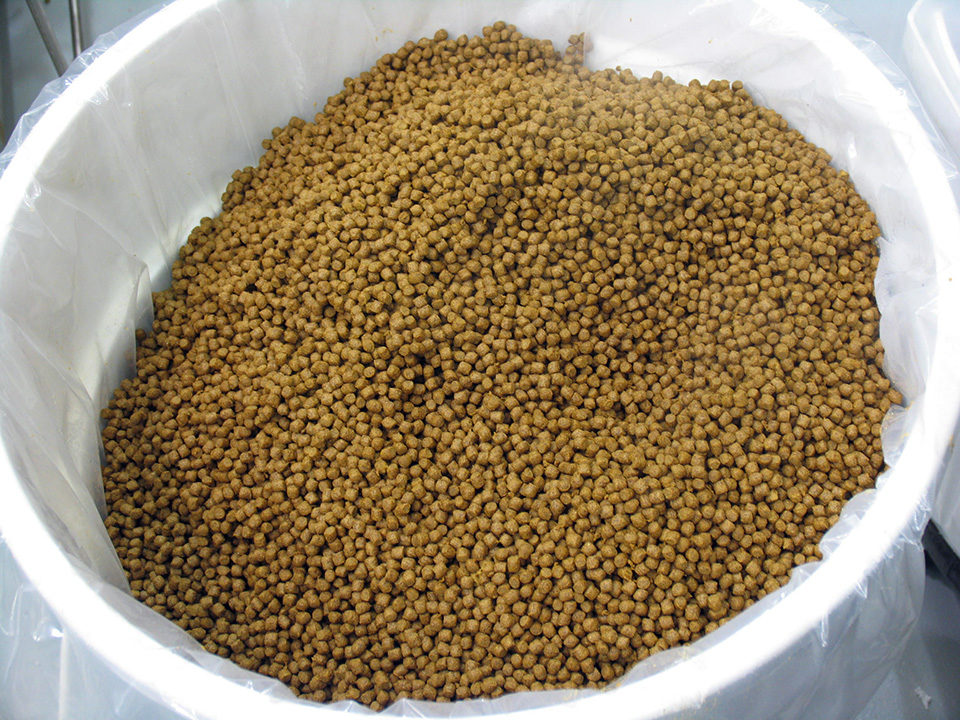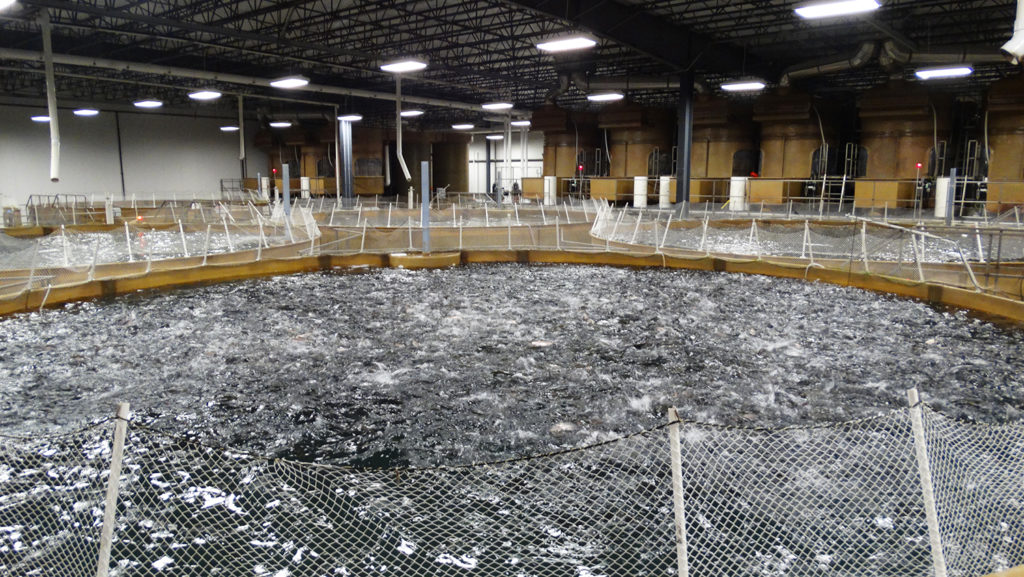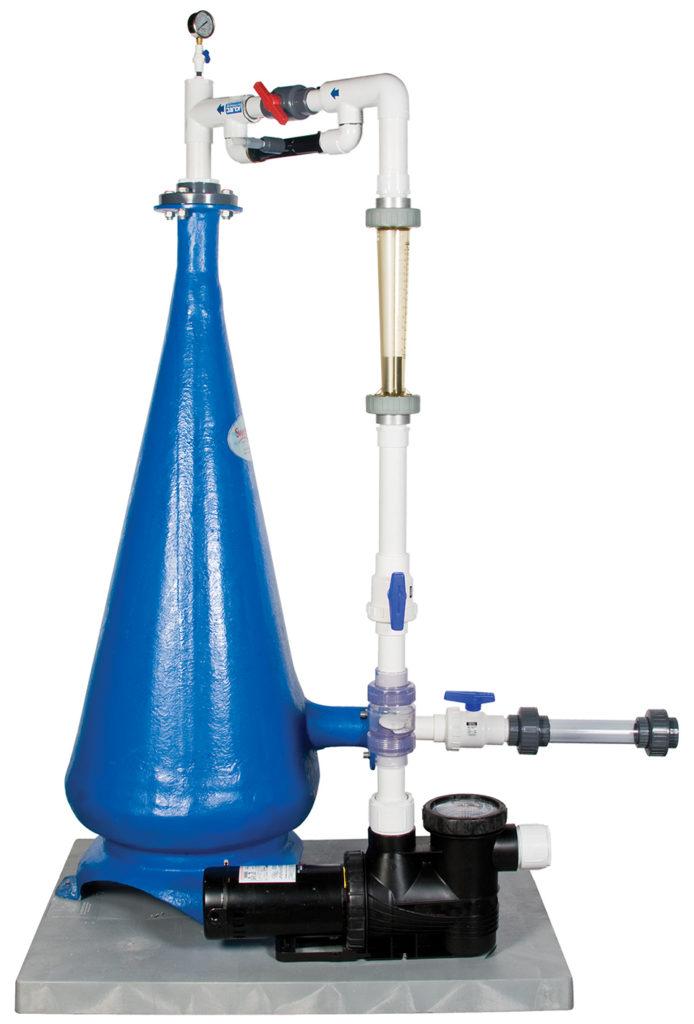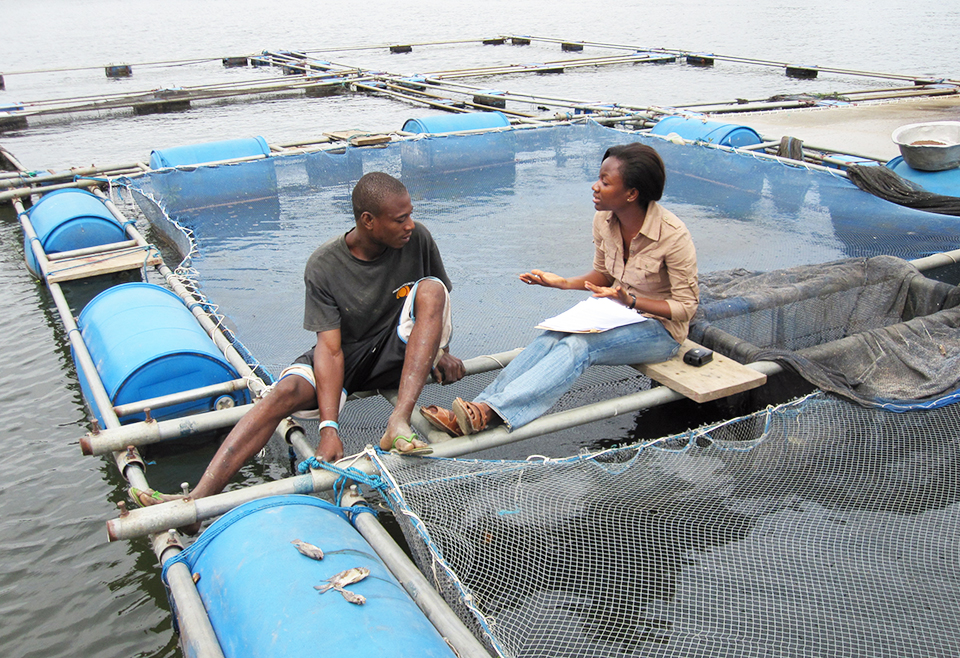Opportunity to design a feed source optimized for carnivorous fish

Carnivorous fish, wild-capture or captive, are the only carnivorous vertebrates widely consumed by people as food. Feeding fish in captivity requires meeting their nutritional requirements. That is best achieved by feeding the fish other animals, primarily other fish in the form of fishmeal.
Feeding captive production fish fishmeal is associated with various problems, including depletion of ocean resources, limits to industry growth due to the finite fishmeal resources and concerns, whether real or perceived, of concentration of undesirable substances through the food chain into the farmed fish.
A possible renewable solution is for farmed fish to be fed seed-based protein and oil products harvested from terrestrial farms. Seed agriculture is the core of world food production and terrestrial meat-animal production.
Using seed protein would resolve most of the concerns of environmental non-governmental organizations by placing the farmed fish lower on the food chain. Seed proteins would also eliminate most of the issues regarding undesirable substances in aquaculture products. However desirable a solution seed proteins might be, some distinct hurdles must be overcome for the wide-scale replacement of fishmeal by plant proteins to be successful.
Issues with seed-derived proteins
Performance tests have shown that feeding some carnivorous fish, especially salmonids, seed-derived proteins results in problems. When fed to carnivorous fish, seed proteins induce a nutritional imbalance or deficiency and an adverse physiological response.
The fundamental problem is that these fish have not evolved to effectively use and tolerate seed constituents. This is in contrast to herbivorous fish such as carp that do possess all the adaptations needed to use plants as food. Of course, seeds have also not evolved to be an optimum animal food.
A seed’s proteins provide post-germination resources to the seedling to begin the next generation. All of the seed’s carbohydrates, oils and other substances evolved to optimally support the specific needs of the growing seedling. The seed’s anti-nutritional substances are the passive defenses of an organism that cannot move out of the way to dissuade animals from eating it. They also impede infestations of fungi and bacteria.
If the aquaculture industry can bridge the gap between the limits of some carnivorous fish to use plant products and the composition of plant products to provide optimum nutrition to support fish growth, this can make carnivorous fish aquaculture a more renewable production stream.
Engineering seed-source feeds
Part of the solution to the dilemma of developing seed-based carnivorous fish aquafeed is to engineer an effective seed-source feed. As fish nutritionists continue to fully define the dietary requirements of farmed fish species, collaborating plant biologists and food/feed technologists can devise approaches to make designer feeds specifically for aquaculture.
Among the many possible seed crops that could be engineered, soybeans are widely considered to have broad potential. Soybeans are already a major feed stock for herbivorous fish. Soybean seeds contain approximately 40 percent protein and 20 percent oil, and the conversion of seeds to protein meal and oil is a mainstay of the food/feed industry.
Some of the factors that appear to produce soybean feed intolerance have been correlated with anti-nutritional substances. Designer feeds need to address not only the negative aspects of seed proteins in fish but also the positive traits that improve the sustainability of feed. Improved processing techniques could remove undesirable components and concentrate desirable components. Processing could also inactivate some anti-nutritional substances and alter the relative ratio of carbohydrate to oil and protein in the seed meal.

Seeds with altered traits
The second approach is to breed seeds that have altered traits that make them more suitable for aquafeed. For example, genetic nulls for anti-nutritional substances have been identified and in some instances crossbred to stack the traits. Breeding from germplasm collections has the advantage that resulting seeds are not transgenic and could therefore support the growing organic aquaculture industry.
A trade-off of removing or altering any single substance through processing technology is collateral alteration of other substances. Breeding is limited to the genetic potential present in germplasm collections and/or that resulting from induced mutation.
Difficulties with breeding, selection
An example of the difficulties in breeding/selection is a project the author’s lab conducted with Dr. Ted Hymowitz of the University of Illinois to identify nulls of a major soybean allergen in the United States Department of Agriculture soybean collection. After screening 16,000 lines, only two were found to be null. After further analysis, they appeared to be duplicate accessions of the same single line collected at different dates. This null of old germplasm is not close to any agronomically useful line, so the transfer of the allergen null trait into elite germplasm will take many years of selective breeding and even once done will potentially be one of many independently segregating traits that a breeder must manipulate.
Direct approach
A direct approach is to design a specific feed for aquaculture end use using biotechnology. Plant biotechnology has greatly matured in the past decade. There is an emerging revolution of new traits, and although some recalcitrance to biotechnology remains among the Europeans, there is broad acceptance and implementation of this technology across much of the rest of the world.
Biotechnology provides a direct path to engineer seeds to a specific composition. Biotechnology can be used to alter multiple traits in already elite lines, making the path from design to product a direct engineering problem. Biotechnology has the further advantage of not being limited to the genetic potential of a given organism’s germplasm. Genes derived from any source could conceptually be used to confer novel traits to seeds that more closely mimic foods that fish consume.
In the context of aquafeed, this provides an opportunity to design a feed source, for example a soybean, optimized for carnivorous fish. This could stack additional feed factors that would ordinarily be derived from multiple sources. Producing an “all-in-one” soybean seed-based feed would provide a cost-efficient means to deliver an enhanced aquafeed to the aquaculture industry from a renewable source.
The concept of this approach is conceptually similar to the projects under way for the nutritional improvement of African staple crops funded by the Bill and Melinda Gates Foundation Grand Challenges in Nutrition. The goal of these projects is to optimize human staples, such as sorghum and cassava, by enhancing their intrinsic nutrition using biotechnology. This model to enhance crops by stacking traits could work equally well to optimize crops such as soybeans for aquafeed.
It is feasible to create gene suppression nulls of several of the anti-nutrition-al factors, such as protease inhibitors, lectins and allergens. These traits could be stacked with nutritional enhancement traits, such as proteins that contain enhanced levels of essential amino acids or are more easily digestible, along with traits to accumulate omega-3 oils and carotenoids such as astaxanthin. Soybeans exhibiting most of these traits have been created, and the primary technical challenge is to stack these and other traits together for performance testing to determine whether this results in any physiological conflict.
While changing so many different traits in one crop remains a technical challenge, it is within the current capabilities of biotechnology. It has already been demonstrated that it is feasible to silence anti-nutritional substances, exchange one seed protein for another, and produce omega-3 lipids and high carotenoid levels in seeds. What remains to be done is to merge the available “pieces” together in a single project with the objective of producing stacked-trait soybeans to test as renewable feed.
Editor’s Note: Aquafeed research in the author’s laboratory is supported by grants from the Illinois-Missouri Biotechnology Alliance and United Soybean Board.
(Editor’s Note: This article was originally published in the September/October 2009 print edition of the Global Aquaculture Advocate.)
Now that you've reached the end of the article ...
… please consider supporting GSA’s mission to advance responsible seafood practices through education, advocacy and third-party assurances. The Advocate aims to document the evolution of responsible seafood practices and share the expansive knowledge of our vast network of contributors.
By becoming a Global Seafood Alliance member, you’re ensuring that all of the pre-competitive work we do through member benefits, resources and events can continue. Individual membership costs just $50 a year.
Not a GSA member? Join us.
Author
-
Dr. Eliot M. Herman
Member and Principal Investigator
Donald Danforth Plant Science Center
975 North Warson Road
St. Louis, Missouri 63132 USA[103,114,111,46,114,101,116,110,101,99,104,116,114,111,102,110,97,100,64,110,97,109,114,101,104,101]
Tagged With
Related Posts

Aquafeeds
A new nutrient for aquaculture, from microbes that consume carbon waste
Biotechnology firm NovoNutrients aims to produce a line of nutraceutical aquafeed additives as well as a bulk feed ingredient that can supplement fishmeal. Its process includes feeding carbon dioxide from industrial gas to a “microbial consortium” starring hydrogen-oxidizing bacteria.

Innovation & Investment
AquaBounty, with new RAS facility, hopes to win public support for GM salmon
Ron Stotish, CEO of AquaBounty Technologies, believes genetically modified salmon is no threat to its opponents and the outlook for AquAdvantage is good. With its purchase of the Bell Fish Co. RAS facility, commercialization will soon commence.

Responsibility
A look at unit processes in RAS systems
The ability to maintain adequate oxygen levels can be a limiting factor in carrying capacities for RAS. The amount of oxygen required is largely dictated by the feed rate and length of time waste solids remain within the systems.

Health & Welfare
A look at tilapia aquaculture in Ghana
Aquaculture in Ghana has overcome its historic fits and starts and is helping to narrow the gap between domestic seafood production and consumption. Production is based on Nile tilapia.



